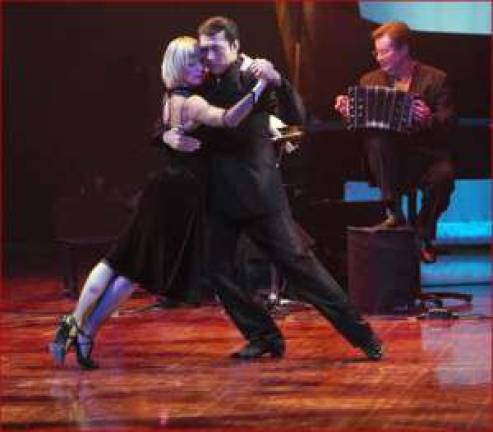By[JUDY GELMAN MYERS](http://cityarts.info/author/judy-gelman-myers/) Despite the popular image of the tango as a dance performed by stiff-necked couples dressed in tails and chiffon jerking their heads about like lizards, tango as an artform issued forth from the poor urban districts of Buenos Aires and Montevideo at the end of the 19th century, forged by working-class European immigrants, descendants of African slaves, and South American natives. In 2009, Argentina and Uruguay petitioned UNESCO to put the tango on the Representative List of the Intangible Cultural Heritage of Humanity. Declaring that "?the music, dance and poetry of tango both embodies and encourages diversity and cultural dialogue? spreading the spirit of its community across the globe even as it adapts to new environments and changing times," UNESCO complied. The spirit of tango was on proud display at Town Hall on June 22 under the loving direction of Romulo Larrea, a native of Montevideo who has devoted himself to serving as international ambassador of the genre. After moving from Uruguay to Quebec, Larrea founded the Romula Larrea Tango Ensemble-six dancers, seven musicians, and one singer (Larrea's daughter) hailing from Canada, Mexico, Germany, Uruguay, and Argentina, embodying tango's cultural diversity and universal appeal. On this return to Town Hall, Larrea presented "Tango for Lovers Only," a program showcasing the historical development of the music, dance, and poetry that has made the artform great. Highlights included "El día que me quieras, " written by "the songbird of Buenos Aires" Carlos Gardel, who so popularized the tango in the early 1900s that devotees are still placing lit cigarettes in the hand of the life-sized statue that graces his tomb, and "Tanguera" by midcentury composer, pianist, and conductor Mariano Mores. The second half was devoted almost entirely to Astor Piazzolla, who revolutionized the form by incorporating elements from jazz and classical music to create the tango nuevo, and who is considered the most important figure in the genre's history. Larrea, a composer in his own right, had the great fortune to work with Piazzolla but modestly played only one of his own compositions, a captivating work entitled "Montréal bleu." Three couples enthralled the audience with the spectacular lifts, oddly flexed footwork, and gymnastic holds that characterize Argentinean and Uruguyan tango and make it so different from the overly mannered ballroom version familiar to most of us (non-tangoing) Americans. The dance highlight, however, was the male-male pairing that was common on the streets and docks of South America, where the men really got to show their stuff.

